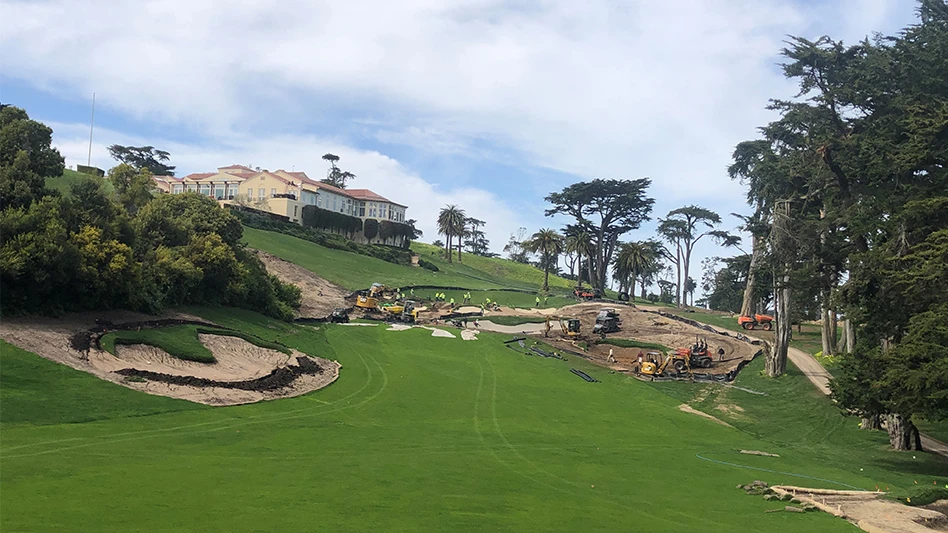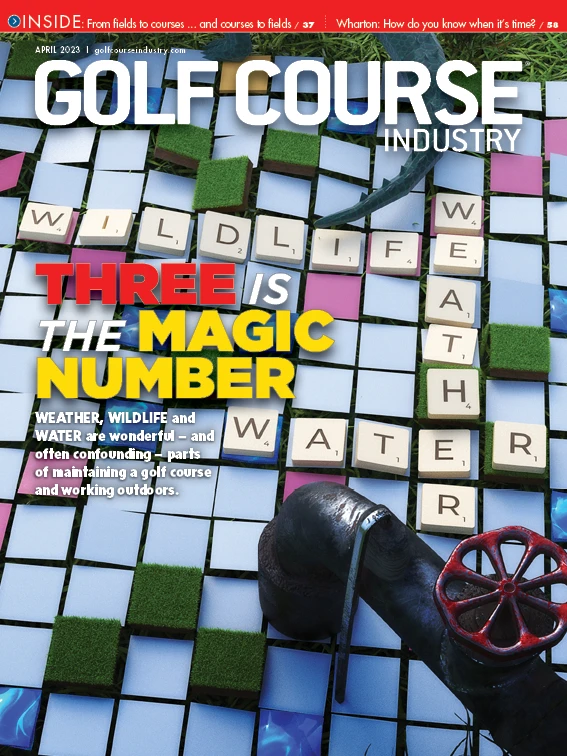

I spent a recent weekend touring golf courses in the Bay Area. Among the half-dozen courses I studied was the famed Olympic Club, over on the west side of San Francisco.
It is a property I’ve been visiting on and off since my first West Coast trip in 1982. Back then, still on 28 years old and having published exactly two golf articles in my life, I was gearing up to caddie in the U.S. Open at Pebble Bach for Bernhard Langer and had a few early free days on hand. It didn’t help my tourism agenda that I was, like any good caddie and aspiring freelance writer, dead broke and needed some spending money. So, I talked my way onto the caddie ranks and double-looped a two-day member-guest that covered the club’s two 18-hole courses, Lake and Ocean.
I was curious to see the work in progress there. The club is midway into a massive rebuild of its famed Lake Course — that has been home to U.S. Opens in 1955, 1966, 1987, 1998 and 2012, and the 2021 U.S. Women’s Open. Director of golf maintenance Troy Flanagan is dealing with an army of laborers and equipment under the direction of architect Gil Hanse, with construction work by Total Turf and fine feature shaping by Hanse’s in-house team of Cave Man Golf.
Not a bunker or green remains undisturbed with work that began with a course shutdown in November 2022. The place is getting the works: new irrigation, all new bunker drainage and transformation of all greens into USGA-grade construction.
After years of tinkering and fixing things in place, Olympic Club has entrusted its future to its past. Thanks to Hanse’s boldness, the course is going back to its original design. Gone are the short-grass surrounds introduced for the 2012 U.S. Open. Gone, too, so to speak, is the anomaly of a championship course with only one fairway bunker influencing a tee shot — on the par-4 sixth hole. Aerials from the 1930s reveal fairway bunkering on at least a half-dozen holes, including the last three. They are all being put back, thus undoing one of Robert Trent Jones Sr.’s biggest changes for the 1955 U.S. Open, when “the Open Doctor” turned his back on the past and marched boldly into his own future.
Along with fairways widened by 25 percent, greens 35 percent bigger and overall bunkering another 30 percent larger in total area, there will be a far more demanding set of tee shots when the course reopens later this year. Golfers of all stripes, from high-handicappers to championship contestants in the 2028 PGA Championship and 2033 Ryder Cup, will now have to contend with an expanded version of the Lake Course’s gravity-defying, terraced fairways.
Most of the course sits on sandy ground — a geological incursion that allows the ground to dry out faster than in many other parts of the Bay Area. That has proved to be a godsend this past winter, which has already seen 3 feet of rainfall since work started. And yet somehow the crews have continued making good, steady progress,
When I was there the focus was on the famed short par-4 18th hole. When the crew is done, they will still leave behind a tiny green. While the new one at 3,000 square feet will be a lot more manageable than the old, 2,000-square-foot green, there will remain that infernal slope halfway down. And when viewed from the fairway, the target will still look minuscule — and as if totally engulfed in sand across the front.
The work is informed, as is all of Hanse’s restoration, by the seemingly contradictory goals of making the golf course both more receptive and more demanding. There’s more room for the wayward shot, more ways for golfers of different skill levels to play the same hole. But there’s also more opportunity to set the golf course up on its edge and force good players trying to make birdies to take risks.
Golf at the Olympic Club’s Lake Course was never meant to be easy. It’s just that from now on there will be more of it to deal with.

Explore the April 2023 Issue
Check out more from this issue and find your next story to read.





